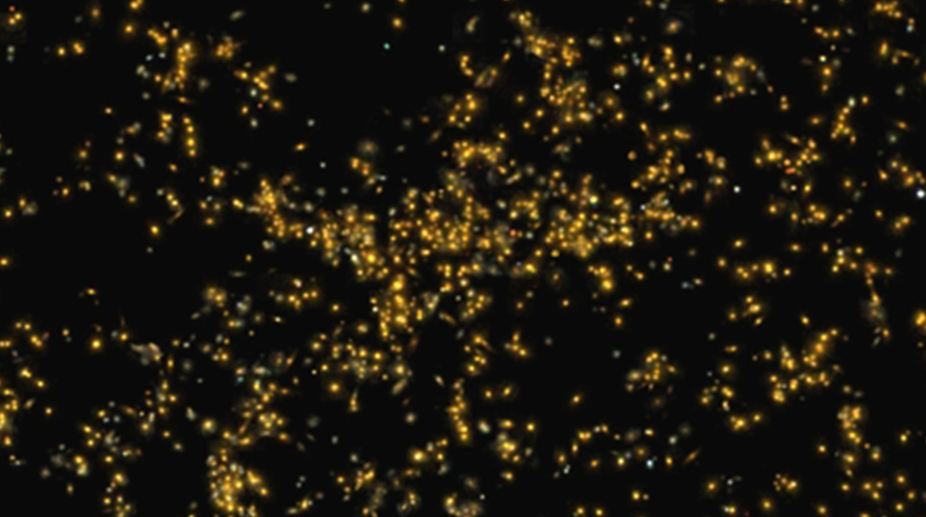A team of Indian astronomers have identified a previously unknown, extremely large supercluster of galaxies located in the direction of the constellation Pisces. They have named it "Saraswati" after the Hindu goddess of knowledge.
"Saraswati" is one of the largest known structures in the nearby universe, and is at a distance of 4,000 million light-years away from us, the astronomers said.
This discovery by astronomers from the Inter University Centre for Astronomy & Astrophysics (IUCAA), and Indian Institute of Science Education and Research (IISER), both in Pune, and members of two other Indian universities, will be published in the forthcoming issue of The Astrophysical Journal of the American Astronomical Society.
"We were very surprised to spot this giant wall-like supercluster of galaxies, visible in a large spectroscopic survey of distant galaxies, known as the Sloan Digital Sky Survey," said study lead author Joydeep Bagchi from IUCAA and co-author Shishir Sankhyayan, a PhD scholar at IISER.
Superclusters are the largest coherent structures in the Cosmic Web. A supercluster is a chain of galaxies and galaxy clusters, bound by gravity, often stretching to several hundred times the size of clusters of galaxies, consisting of tens of thousands of galaxies.
This newly-discovered ‘Saraswati' supercluster, for instance, extends over a scale of 600 million light-years and may contain the mass equivalent of over 20 million billion suns.
When astronomers look far away, they see the Universe from long ago, since light takes a while to reach us.
The Saraswati supercluster is observed as it was when the universe was 10 billion years old.
The long-popular "Cold dark matter" model of the evolution of the universe predicts that small structures like galaxies form first, which congregate into larger structures.
Most forms of this model do not predict the existence of large structures such as the "Saraswati supercluster" within the current age of the universe.
The discovery of these extremely large structures thus force astronomers into re-thinking the popular theories of how the universe got its current form, starting from a more-or-less uniform distribution of energy after the Big Bang, the astronomers said.
Researchers from Newman College in Thodupuzha, Kerala and National Institute of Technology, Jamshedpur in Jharkhand were also involved in the research.











